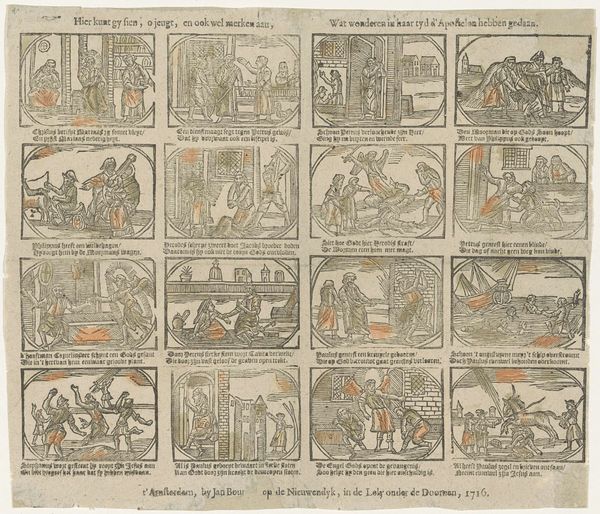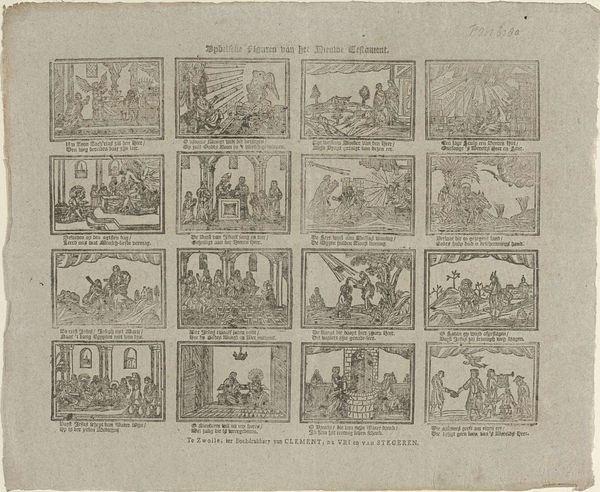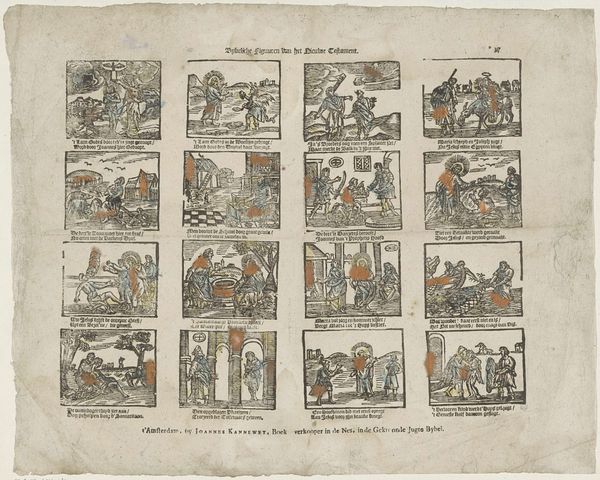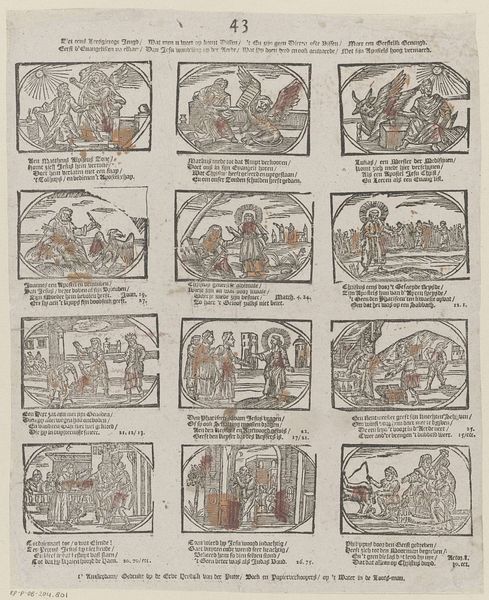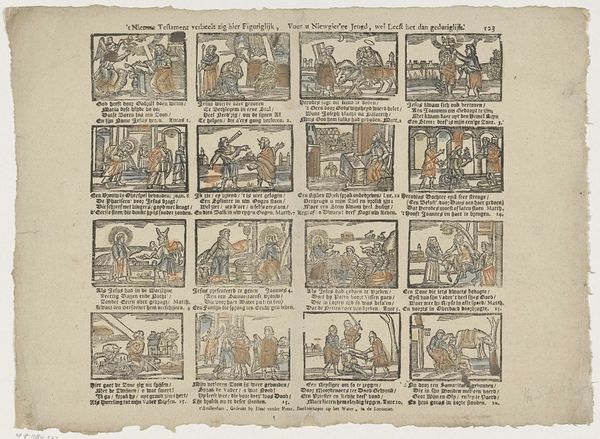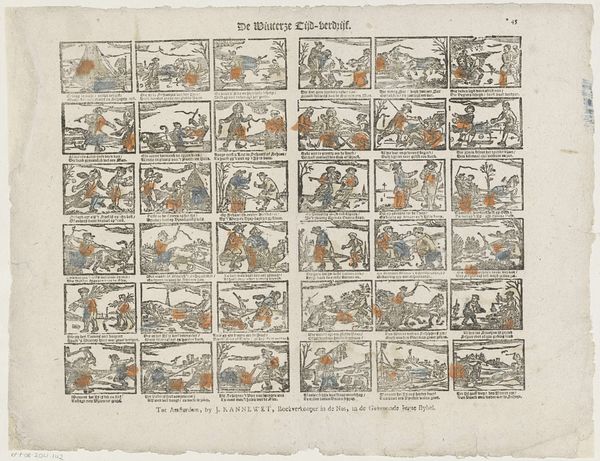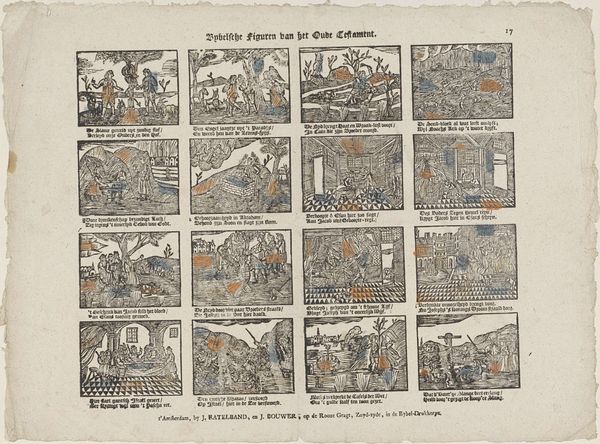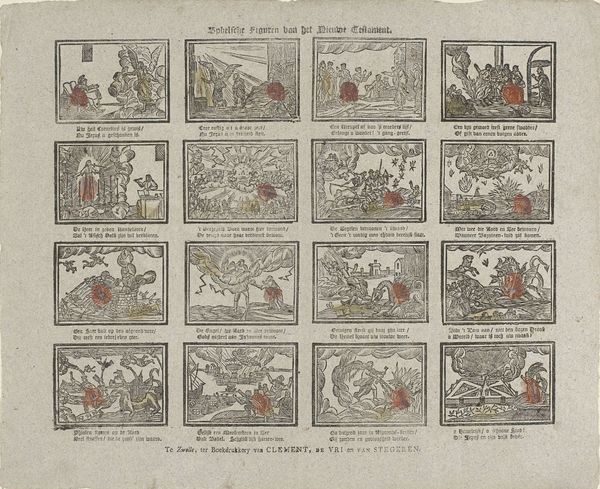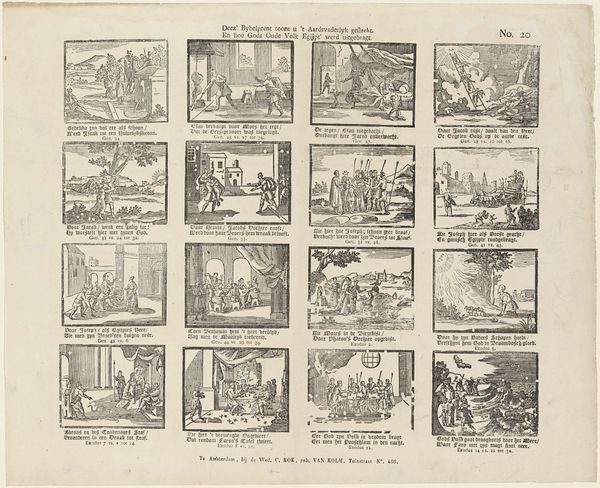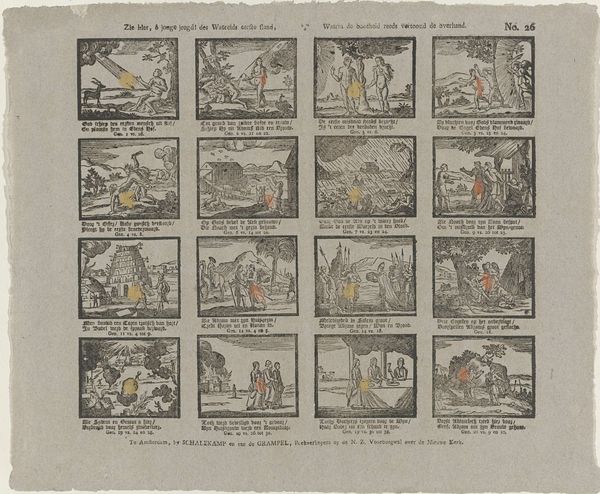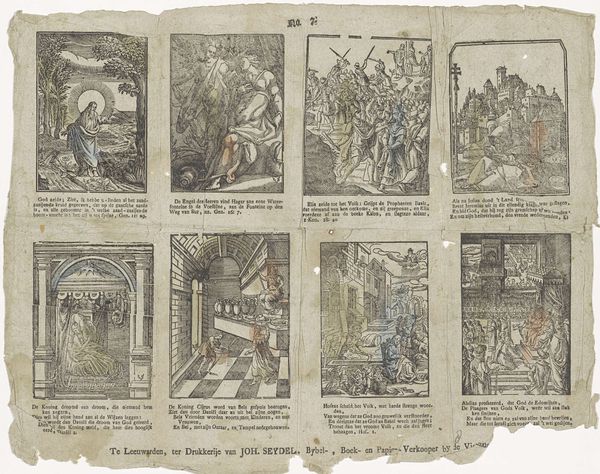
graphic-art, print, engraving
#
graphic-art
#
narrative-art
#
dutch-golden-age
# print
#
genre-painting
#
engraving
Dimensions: height 320 mm, width 398 mm
Copyright: Rijks Museum: Open Domain
Editor: This is "Biblical and Moral Scenes" by Johannes Seydel, dating from 1776 to 1813. It's an engraving, almost like a page from a children’s book, filled with small narrative images. What stands out to me is how each scene feels like a miniature stage, and I wonder how it would have been received back then? What can you tell me about the role of art like this in society at that time? Curator: This piece operates within a fascinating intersection of print culture, religious instruction, and emerging popular art forms. Seydel was a printer in Leeuwarden, and this sheet likely served as a cheap and accessible form of moral education. Consider how these images would have circulated. Were they pinned to walls, used as teaching aids, or collected in scrapbooks? Editor: So it’s less about aesthetic appreciation and more about its utility? Curator: Exactly. We can also think about the politics of imagery at play. The Dutch Golden Age, even as it waned, still grappled with religious identity and societal values. Seydel’s work reinforces a particular worldview, likely aimed at a specific segment of the population. How might the choice of biblical scenes influence its reception, especially in a diverse society? Editor: It’s interesting how these images weren't necessarily aimed at an elite audience but served to inform broader society with specific values. Curator: Precisely. This work gives insight into the public role of art. Thinking about the artist as a publisher who sold these on the open market suggests his target to promote the religious values during the specific Dutch age. Editor: That's really opened my eyes to a new dimension. Thanks! Curator: It was a pleasure to share. Now, go forth and critically examine all art through the lens of history!
Comments
No comments
Be the first to comment and join the conversation on the ultimate creative platform.

